Related Research Articles

Lieutenant-General Sir Charles Craufurd Fraser was a British Army officer and Conservative politician. He was arecipient of the Victoria Cross, the highest and most prestigious award for gallantry in the face of the enemy that can be awarded to British and Commonwealth forces.

Field Marshal George Hay, 8th Marquess of Tweeddale, was a British soldier and administrator. He served as a staff officer in the Peninsular War under Arthur Wellesley and was with Wellesley at the Second Battle of Porto when they crossed the Douro river and routed Marshal Soult's French troops in Porto. Hay also saw action at the Battle of Bussaco and at the Battle of Vitoria. He later served in the War of 1812 and commanded the 100th Regiment of Foot at the Battle of Chippawa when he was taken prisoner of war. He went on to become governor of Madras and, at the same time, Commander-in-Chief of the Madras Army, in which role he restored the discipline of the army, which had been allowed to fall into a relaxed state.
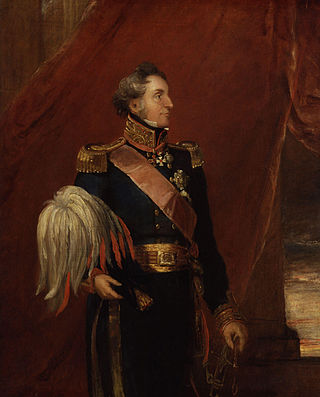
Lieutenant General Richard Hussey Vivian, 1st Baron Vivian, known as Sir Hussey Vivian from 1815 to 1828 and Sir Hussey Vivian, Bt, from 1828 to 1841, was a British cavalry leader from the Vivian family.
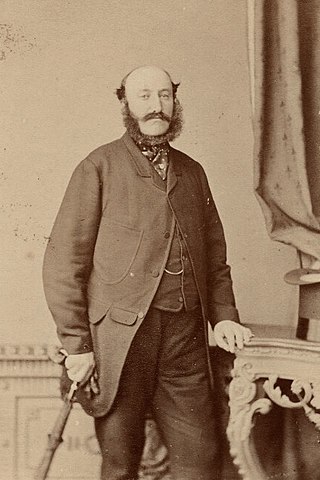
Henry Charles FitzRoy Somerset, 8th Duke of Beaufort, KG, PC, styled Earl of Glamorgan until 1835 and Marquess of Worcester from 1835 to 1853, was a British peer, soldier, and Conservative politician. He served as Master of the Horse, Member of Parliament for East Gloucestershire, and Lord Lieutenant of Monmouthshire.

General William Rose Mansfield, 1st Baron Sandhurst was a British military commander who served as Commander-in-Chief of India from 1865 to 1870.

Field Marshal Sir John Michel, was a British Army officer. He commanded the 6th Regiment of Foot during the Eighth Xhosa War in 1851 and served as Chief of Staff of the British Army's Turkish contingent during the Crimean War in 1854 before transferring to India where he commanded the Malwa Field Force which pursued Tatya Tope in the aftermath of the Indian Mutiny. He then commanded the 1st Division at the Battle of Taku Forts in August 1860 during the Second Opium War and took part in the burning of the Old Summer Palace at Peking in October 1860 as a reprisal for the torture and murder of British prisoners before being appointed Commander of British Troops in China and Hong Kong in 1861. He later commanded the forces in British North America playing a key role in the organization of the militia volunteers in resistance to the Fenian raids invasions in 1866. His last appointment was as Commander-in-Chief of Ireland in 1875.

The 8th King's Royal Irish Hussars was a cavalry regiment in the British Army, first raised in 1693. It saw service for three centuries including the First and Second World Wars. The regiment survived the immediate post-war reduction in forces, and went on to distinguish itself in the battles of the Korean War, but was recommended for amalgamation in the 1957 Defence White Paper prepared by Duncan Sandys. The regiment was amalgamated with the 4th Queen's Own Hussars, to form the Queen's Royal Irish Hussars in 1958.
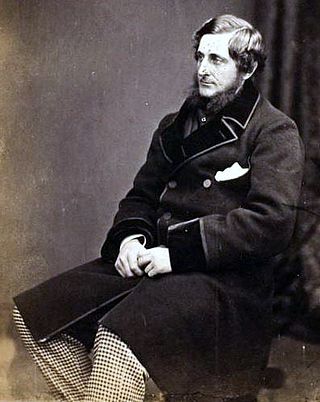
General Sir Thomas Montagu Steele was a British army officer.
Lieutenant-General Edward Arthur Somerset CB was a British soldier and Conservative Party politician, the son of Lord Robert Somerset.
Lieutenant General Marcus John Slade was a British Army officer who became Lieutenant Governor of Guernsey.

General Sir Richard Chambré Hayes Taylor was a senior British Army officer who served in the Second Anglo-Burmese War, the Crimean War and the Indian Mutiny. Joining the General Staff in 1860, he was the British Army's Inspector General of Recruiting, then Deputy Adjutant-General to the Forces, briefly Adjutant-General, and finally for three years Governor of the Royal Military College, Sandhurst. He was also Colonel of the Queen's Own Cameron Highlanders and the East Surrey Regiment.
General George Frederick Upton, 3rd Viscount Templetown, styled The Honourable George Upton until 1863, was an Irish soldier and politician.
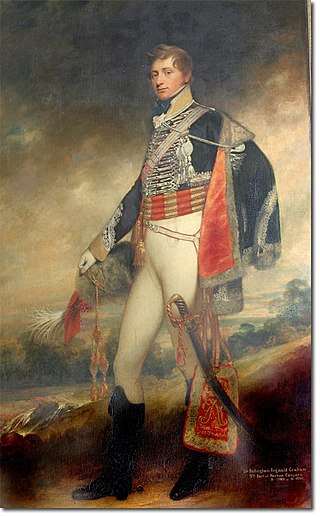
Sir Bellingham Reginald Graham, 7th Baronet was an English Baronet.
Major-General The Honourable Robert Bruce was a British Army officer who served as Governor to the young Prince of Wales, later King Edward VII.

Lieutenant-General Sir Joseph Thackwell was a British Army officer. He served with the 15th Hussars in the Peninsular War at the Battle of Sahagún in 1808 and the Battle of Vitoria in 1813, and he lost his left arm at the Battle of Waterloo in 1815. He commanded the regiment from 1820 to 1832. He then served in India, commanding the cavalry in the First Anglo-Afghan War of 1838–89, and at the Battle of Sobraon in the First Anglo-Sikh War of 1845–46, and at the Battle of Chillianwala and Battle of Gujrat in the Second Anglo-Sikh War of 1848–9. He also commanded the 3rd The King's Own Dragoons, was colonel of the 16th Lancers, and was appointed Inspector-general of cavalry.

Major-General Sir Francis Walter de Winton was a British Army officer, colonial administrator and courtier in the Household of the Duke of York. He notably served as Administrator-General of the Congo Free State under King Leopold II of Belgium.
General John Longfield, CB was an Irish senior officer in the British Army.

General William Charles Forrest was a senior officer in the British Army.

General Sir Arthur Augustus Thurlow Cunynghame was a British Army commander and memoirist. Cunynghame was colonel-commandant of the King's Royal Rifle Corps and of the 36th Regiment of Foot.
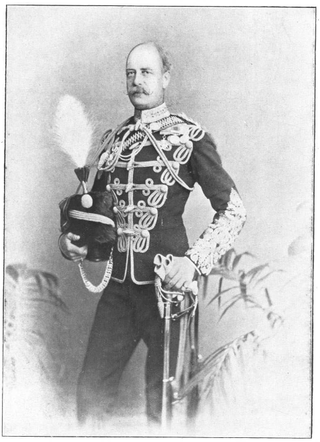
Edward Alexander Wood was an English first-class cricketer and British Army officer. Wood was a career soldier in the 10th Royal Hussars, rising to the rank of major-general. He fought in both the Second Anglo-Afghan War and the Mahdist War, with Wood being made a Companion to the Order of the Bath for his service in the latter. He was also a first-class cricketer, appearing in one match in 1875.
References
- ↑ "8th King's Royal Irish Hussars Commanding Officers". British Empire Web Site. Retrieved 18 March 2024.
- 1 2 3 4 "General Gibsone". The Times. No. 31, 193. London. 23 July 1884. p. 8.
- ↑ "The Edinburgh County Directory". Scottish Post Office Directories. Retrieved 18 March 2024.
of Pentland
- ↑ "John Gibsone". My Heritage. Retrieved 18 March 2024.